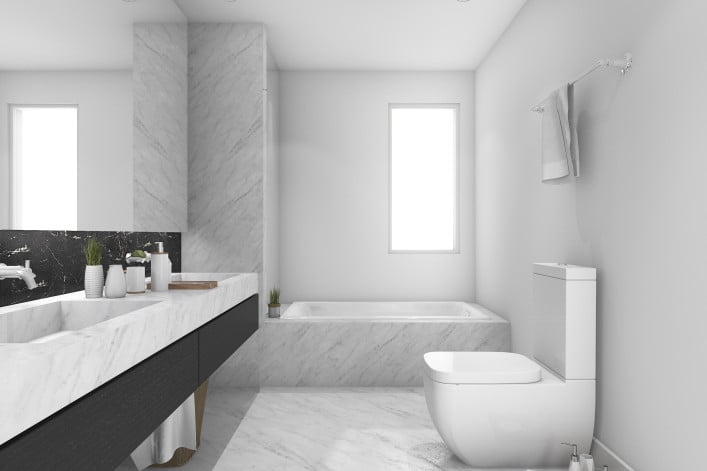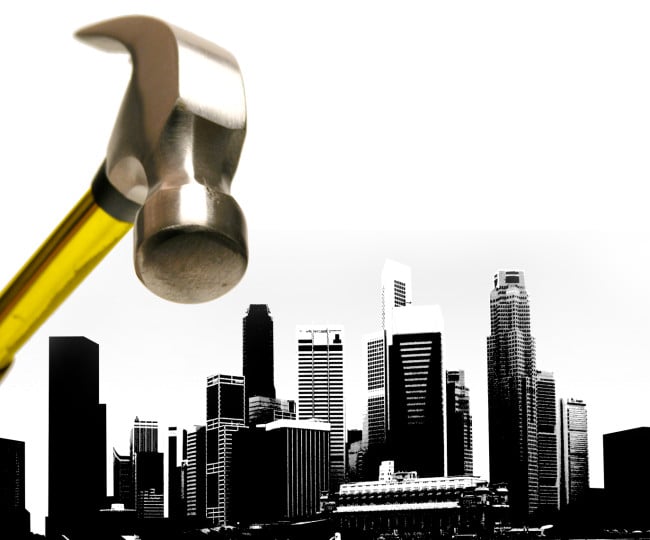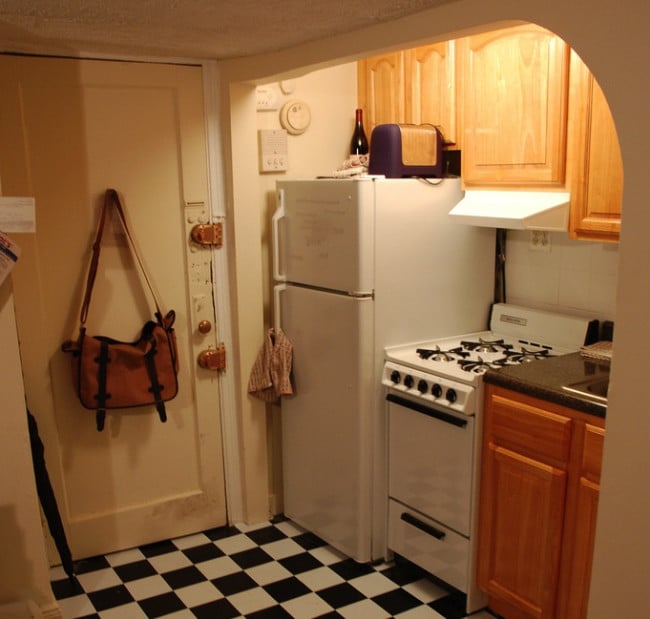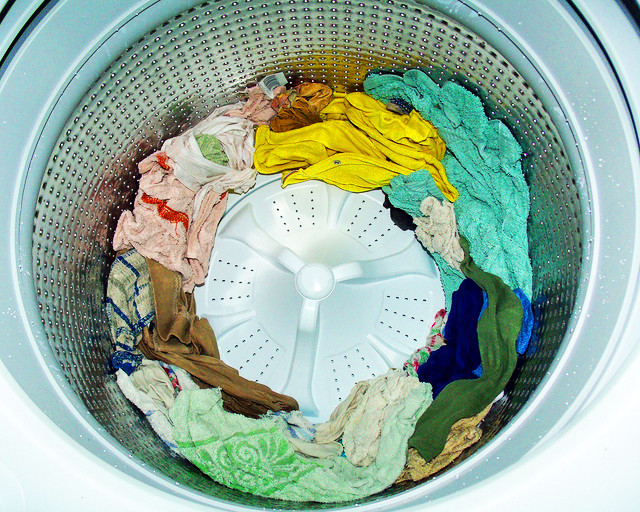The white marble in my bathroom is starting to turn brown. Is there anything I can do?

We did a beautiful bathroom renovation that included <a href="https://en.wikipedia.org/wiki/Carrara_marble">Carrara marble</a>, but the area surrounding the bathtubs started to turn brown in spots after about a year. Any idea what's causing it and whose responsibility it is to deal with that?
It's annoying to see your beautiful renovation starting to look less beautiful, and it's not entirely uncommon, according to our experts.
"While grout is designed to prevent moisture seepage, it is still very porous and therefore stains easily," says Fraser Patterson, founder and CEO of Bolster, a Brick Underground sponsor. "Also white/Carrara marble sometimes contains deposits of iron which, if exposed to water, can cause rust stains in the marble itself and surrounding grout. That may be the cause of the problem."
Generally, most contractors offer 12 months' warranty on workmanship and materials, "but some provide extended warranties for types of work that typically take longer for problems to emerge so it’s worth giving the contractor a call," Patterson says. "Also, even if the issue is beyond the 'official' warranty phase, the contractor may return to help out of goodwill and depending upon how busy they are."
On the plus side, even if your contractor isn't willing to make the change, or it's been longer than 12 months since you had your renovation, you may not have to pay out of pocket.
"It could be a damage to the shower pan and conceivably could be a covered insurance claim," says Jeff Schneider of Gotham Brokerage, also a Brick Underground sponsor. "A claim should be put in right away so that the insurance company can determine the cause."
Deanna Kory, an agent with Corcoran, says this is something she sees a lot when selling apartments, and why she generally thinks white marble on the bathroom floors or in the shower is not a good idea.
"The discoloration is from certain minerals leaching from the water into the porous stone," she says. "Whenever we give people advice on renovations with an eye toward resale, we advise people to not use any sort of porous stone on the floor of the bathroom, and even potentially not on the walls. ... It seems that most contractors do not employ whatever method might prevent it."
Kory says as an alternative to Carrara marble, she often recommends," the owner consider using either white glass or white tile that looks like stone. There are now some great man-made materials that look just like Carrara marble and are not porous."
General contractor Jeff Streich of Prime Renovations says he had an experience where he and his team used the wrong screws—just regular, run-of-the-mill metal screws—which caused rusting in the marble. Once they replaced the browning tiles and subbed in stainless-steel screws instead, the client never had a problem.
Streich says that the first and cheapest option is to buy some poultice, a marble cleaning product (you'll want to hire someone to use this).
You can also ask your contractor for a recommendation on a professional stone cleaner.
If neither of those things work—though Streich says they should—you'll have to rip out the tiles and replace them. But he warns that it'll be very difficult to find pieces of Carrara marble that perfectly match what you have—and expensive if you have a single large slab, versus smaller individual tiles. That's why good contractors usually buy an extra box of tiles for this very thing, and if you have those, things will be a lot easier.
"You can probably hire a contractor in that case for anywhere from $300 to $700 to replace them, and it'll take a couple of days," Streich says.
Note: The grout will be very white for a while and won't perfectly match the rest of the grout in your bathroom, which has likely grayed a bit over time.
Oh, and there's one more thing to consider: Bugs.
"It is important to ascertain whether it is due to a moisture issue, which can result in a mold or fungus condition," says Gil Bloom of Standard Pest Management. "There are also a number of insect pests which may feed on minute amounts of fungus such as psocid, aka book lice, fungus/plaster beetles and fungus gnats. If this develops, it will be necessary to correct the cause and dry out the environment via a quality dehumidifier and possible treatment."
Trouble at home? Get your NYC apartment-dweller questions answered by an expert! Send us your questions.
Check out more Ask an Expert stories here.
You Might Also Like





























